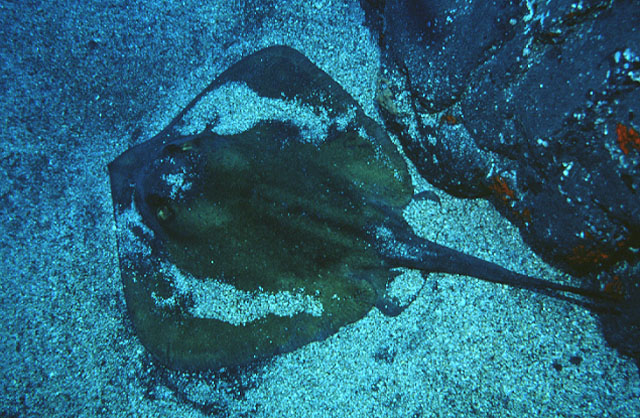| Dasyatidae (Stingrays), subfamily: Dasyatinae |
| 69.5 cm WD (male/unsexed); max.weight: 15 kg |
|
demersal; brackish; marine; depth range 5 - 200 m |
| East Atlantic and the Mediterranean and Black Sea, from the North Sea to Angola. |
|
Description: A large stingray; disc rhombic, its anterior margins forming an obtuse angle (Ref. 81259). Dorsal surface naked, except for a more or less well developed mid-dorsal row of thorny tubercles extending from nape to sting-base (Ref. 81259). Tail long and whiplike, slightly rough behind the sting, with a long dorsal ridge extending backwards from the sting, and a long, but low, ventral fold (Ref. 81259).
Colouration: Back greyish-green to greenish-brown; belly whitish, pectoral margins dark (Ref. 81259). |
| A coastal species, which enters coastal lagoons, shallow bays and estuaries (Ref. 81259). Found over sandy and muddy bottoms, sometimes near rocky reefs (Ref. 12951). Feeds on bottom fishes, crustaceans and mollusks. Ovoviviparous, gestation period about 4 months and 4-7 young are produced. Wings marketed smoked, dried-salted, and also used for fishmeal and oil. Harmful to shellfish banks; dangerous to bathers and fishers due to its poisonous spine. Barbed poison spine is a modified denticle that can be 35cm long, shed occasionally and replaced (Ref. 35388). Maximum reported width about 150 cm (Ref. 81259). |
|
Vulnerable (VU); Date assessed: 04 August 2020 (A2bd) Ref. (130435)
|
| venomous |
Source and more info: www.fishbase.org. For personal, classroom, and other internal use only. Not for publication.
